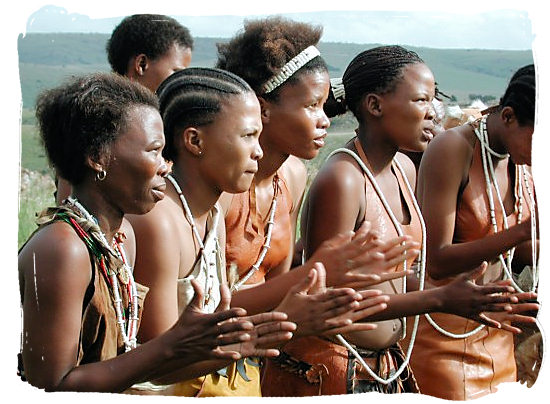Im Kemet Rocky & I like penis
googling gay porn :ahh:
khoisan (or san,xhosan,or bushmen by cacs)
Joseph K. Pickrell et al.
The hunter-gatherer populations of southern and eastern Africa are known to harbor some of the most ancient human lineages, but their historical relationships are poorly understood. We report data from 22 populations analyzed at over half a million single nucleotide polymorphisms (SNPs), using a genome-wide array designed for studies of history. The southern Africans-here called Khoisan-fall into two groups, loosely corresponding to the northwestern and southeastern Kalahari, which we show separated within the last 30,000 years. All individuals derive at least a few percent of their genomes from admixture with non-Khoisan populations that began 1,200 years ago. In addition, the Hadza, an east African hunter-gatherer population that speaks a language with click consonants, derive about a quarter of their ancestry from admixture with a population related to the Khoisan, implying an ancient genetic link between southern and eastern Africa.
The genetic structure of 126 Ethiopian and 139 Senegalese Y chromosomes was investigated by a hierarchical analysis of 30 diagnostic biallelic markers selected from the worldwide Y-chromosome genealogy. The present study reveals that (1) only the Ethiopians share with the Khoisan the deepest human Y-chromosome clades (the African-specific Groups I and II) but with a repertoire of very different haplotypes; (2) most of the Ethiopians and virtually all the Senegalese belong to Group III, whose precursor is believed to be involved in the first migration out of Africa; and (3) the Ethiopian Y chromosomes that fall into Groups VI, VIII, and IX may be explained by back migrations from Asia. The first observation confirms the ancestral affinity between the Ethiopians and the Khoisan, which has previously been suggested by both archaeological and genetic findings
Basically khoisan are a hunter gatherer tribe that has been in south africa for the longest and remained pure to their black roots..



Joseph K. Pickrell et al.
The hunter-gatherer populations of southern and eastern Africa are known to harbor some of the most ancient human lineages, but their historical relationships are poorly understood. We report data from 22 populations analyzed at over half a million single nucleotide polymorphisms (SNPs), using a genome-wide array designed for studies of history. The southern Africans-here called Khoisan-fall into two groups, loosely corresponding to the northwestern and southeastern Kalahari, which we show separated within the last 30,000 years. All individuals derive at least a few percent of their genomes from admixture with non-Khoisan populations that began 1,200 years ago. In addition, the Hadza, an east African hunter-gatherer population that speaks a language with click consonants, derive about a quarter of their ancestry from admixture with a population related to the Khoisan, implying an ancient genetic link between southern and eastern Africa.
The genetic structure of 126 Ethiopian and 139 Senegalese Y chromosomes was investigated by a hierarchical analysis of 30 diagnostic biallelic markers selected from the worldwide Y-chromosome genealogy. The present study reveals that (1) only the Ethiopians share with the Khoisan the deepest human Y-chromosome clades (the African-specific Groups I and II) but with a repertoire of very different haplotypes; (2) most of the Ethiopians and virtually all the Senegalese belong to Group III, whose precursor is believed to be involved in the first migration out of Africa; and (3) the Ethiopian Y chromosomes that fall into Groups VI, VIII, and IX may be explained by back migrations from Asia. The first observation confirms the ancestral affinity between the Ethiopians and the Khoisan, which has previously been suggested by both archaeological and genetic findings
Basically khoisan are a hunter gatherer tribe that has been in south africa for the longest and remained pure to their black roots..








 ? I know you don't associate with other blacks, but why the need to place us a level beneath you at every possible turn? You can celebrate your people's achievements without "subtly" talking down ours and us by extension. Don't play dumb/innocent either
? I know you don't associate with other blacks, but why the need to place us a level beneath you at every possible turn? You can celebrate your people's achievements without "subtly" talking down ours and us by extension. Don't play dumb/innocent either , and act like your comment was made in a vacuum....every opportunity you get you extol the superiority of your "stock" in a way not unlike a white supremacist or a proponent of "human biodiversity".
, and act like your comment was made in a vacuum....every opportunity you get you extol the superiority of your "stock" in a way not unlike a white supremacist or a proponent of "human biodiversity".